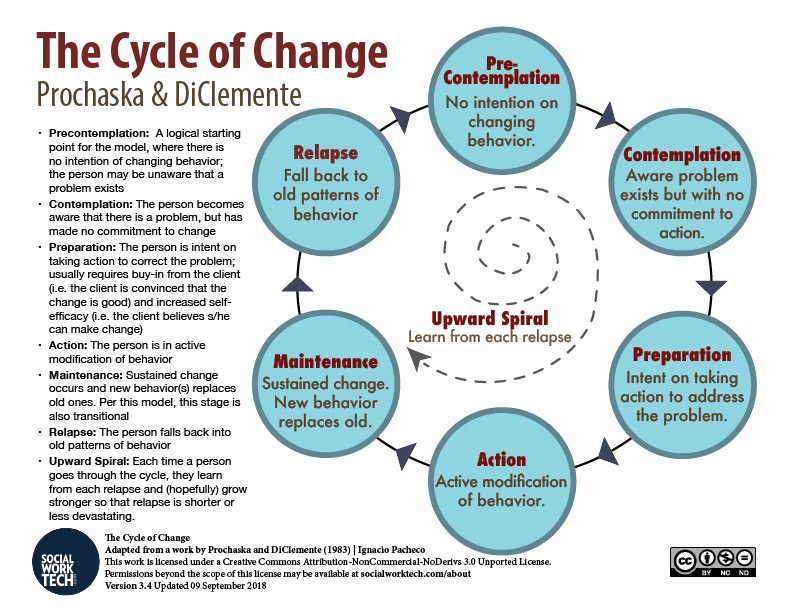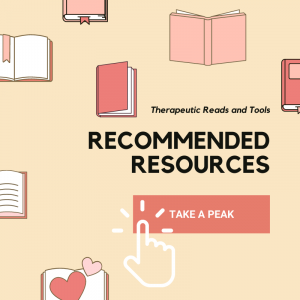
Navigating Change
Navigating Change
Whether it’s longing for change, or finding it happen without warning, this article touches on some common approaches that counsellors, psychotherapists and coaches alike will look to when understanding and navigating the unique circumstances people may find themselves in when it comes to moving through change.
Four major factors that come up time and time again, are these key elements of what helps to adapt and evolve were;
- Learning: Feedback from experience.
- Behavioural: Safety behaviours and rewards.
- Resources: Internal and external toolbox.
- Mindset: Fixed VS Growth.
Learning: Feedback from experience
According to a study by James O. Prochaska, there are different areas of behavioural change which require decisions on small and larger scales, which all involve variables within the stages of transition. The Cycle of Change has evolved since the first paper released back in 1987, and most recently 2017 with the recent book release called Changing to Thrive.
This initial concept of all change begins with taking the first step of realising something needs to change and resulting in learning what doesn’t work from any mistakes or relapses throughout the upward spiral of moving through change.

Behavioural: Safety behaviours and rewards
Behaviour neuroscientist, Tali Sharot shares research in this captivating Ted Talk on ways to look at why we would be resistant to change and how any explicit warnings have limited impact. Detailing how some warning signs, or flags which lead to the bad or unwanted behaviours later in life are maladaptive safety behaviours that were useful at some point in life and worked with the path of the least resistance. These unwanted behaviours may then become a barrier to meeting needs or developing healthy safety behaviours later in life. This video addresses the important components within the process of change coming from social incentives, immediate reward and progress monitoring.
Resources: Internal and External Toolbox
Journaling
Critical reflection through journaling helps build resilience ‘muscles’ through self-efficacy and providing a space to process thoughts, feelings and develop a sense of self.
A classic journaling exercise called the ‘What, So what, Now What’ model helps to do this effectively by noting what happened by provided details of the event or interaction or reaction, and then asking the self, so what was/is it about that event or situation that is significant for you or why did it have the impact it did. Concluded with now what? Now the experience, emotion or thoughts have been acknowledged, what would you like to do about it or to happen instead?
This type of reflection helps build on ones own understanding of themselves and their values whilst observing from a different perspective to enable problem-solving and resourcefulness.
Dedicated Apps
If keeping track is a driver for you, there are plenty of apps that encourage and track progress, such as 7 minutes workout, and others that require tracking substance use or thought process when learning to change maladaptive behaviours.
Websites such as Life Hack and Ted Talk provide a platform where videos and articles are provided for those seeking out how to make change effectively in areas specific to their needs providing positive reinforcing reasons why change might help.
Whilst all the above tools provide benefits for getting onto the path for change in times when lack of immediate social support or finances are available, inevitably, the decision around taking actions is solely up to the person who is thinking of making a change.
Online Support Groups
If external motivation sounds more useful, there are an abundance of online social groups dedicated to helping others going through change together. Most are run by a trained coach, therapist or facilitator in the specific context or situational topic for guidance. It can be within these spaces where supporting and lifting others up can feel rewarding and motivating in itself.
This is also where accountability comes in useful. Finding a group or an individual that helps to keep things on track within mutual support of what you’re both working towards. Have a nudge from someone who’s going through a similar experience is especially useful when doubt or the discomfort of the unfamiliar sneaks in, in the form of avoidance.
Dedicated support
Where there are preferences towards a personalised or 1-to-1 support, having a mentor, therapist or counsellor to provide a space for reflection, exploring values and needs, or challenge limiting beliefs could be more useful. This form of support allows one to feel heard and seen within a safe environment whilst processing things that might feel otherwise irrational but all valid in terms of finding a unique and useful understanding or experiential work.
Mindset: Fixed VS Growth
Carol Dweck, Ph,D., developed the concept of Fixed VS Growth mindset when looking at how the personal desire to learn and take risks into the unknown can be hindered by an avoidance stance, of not wanting to fail, versus the learning stance, of wanting to move onto the next phase or level to develop or better oneself in their relations, tasks or skills.
There isn’t necessarily a static form of this mindset of people having either one or the other. It’s a fluid pattern that happens to everyone — teachers, parents, students and even Carol has admitted to catching herself in a fixed mindset at times.
The fixed mindset can be experienced as being there to protect us from social rejection, feeling invalidated or conditional acceptance. What is really useful to be aware of when it’s happening it to ask the question… is this fixed mindset serving the desire and need for change to happen? If not, thank the thought or felt senses for catching it popping up and reframe the thought with “what would serve the need to overcome this obstacle?”
Fixed Mindset…
“I simply can’t…”“Some people are born with it…”“It’s not possible…”
Growth Mindset…
“I’m not sure how, but I’ll figure it out”“This is tough now, but it’ll get easier”“What other options are there?”
Mindset coaching, such as the work of Tony Robbins looks particularly close to rewiring the brain to more empowering and positively charged thinking patterns.
NLP coaching and CBT therapies provides structural frameworks that enable this paradigm shift. Observing the fixed mindset thinking and opening up the possibilities and perspectives to alternative (growth) frames of thought and processing situations that also work towards the same desired outcome. Applying these alternative thought patterns to ruminating thought, along with journaling or even social support, creates a new habit that becomes second nature and just like building muscles, the aches and pains become less noticeable and the rewards can be felt as well as seen after time.
In this video, Carol Dweck explains extensively on the research and application of “The Growth Mindset”.
Peoples preferences may change over time as life unfolds when moving into different environments, relationships, beliefs or blind sighted events.
Whatever you feel works for you RIGHT NOW is what matters. There is no good nor bad starting point, only what is beneficial or not beneficial at this moment in time for what you want to have more of for yourself now and in the long run. Wishing you all the best in your human experience, whatever lessons it brings.
Recent Articles
Amanda Salvara MBACP
Accredited Counsellor, Psychotherapist and NLP Coach
Contact
+4420 8106 0776
hello@amandasalvara.com

